CCSS.ELA-LITERACY.RL.6.2
Determine a theme or central idea of a text and how it is conveyed through particular details; provide a summary of the text distinct from personal opinions or judgments.
- Free Plan
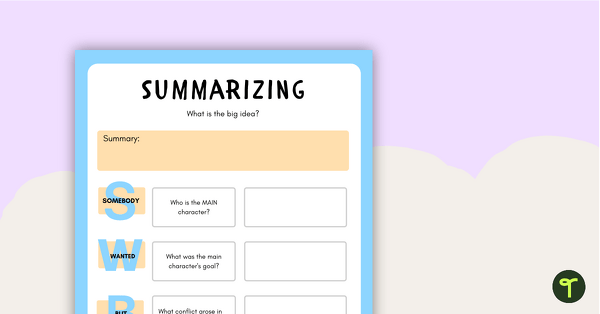
S.W.B.S.T. Summarizing Graphic Organizer
Use this printable SWBST strategy graphic organizer with students to write a summary for a fictional piece of text.
- Free Plan
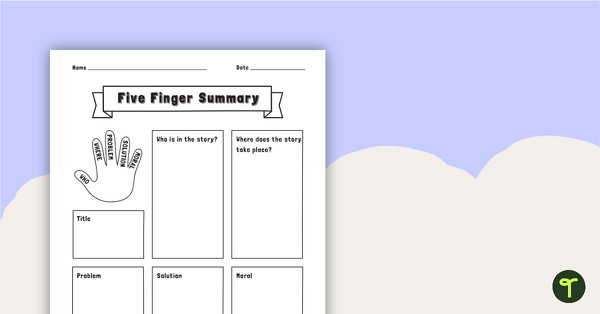
Five Finger Summary - Graphic Organizer
A graphic organizer for students to use to summarize a fiction text.
- Plus Plan
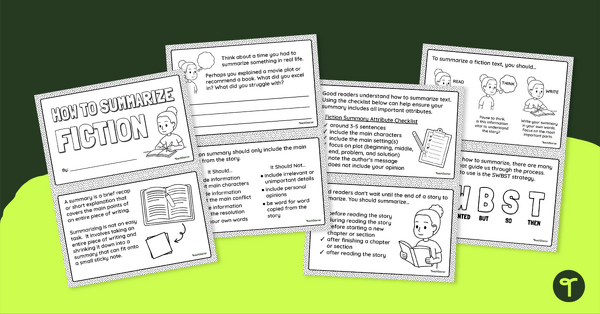
How to Summarize Fiction Mini Book
Explore the important factors of summarizing a fiction text with this student mini-book.
- Plus Plan

Summarizing a Story Graphic Organizers
Help students remember the fundamentals of summarizing a story with this set of fun graphic organizers.
- Plus Plan
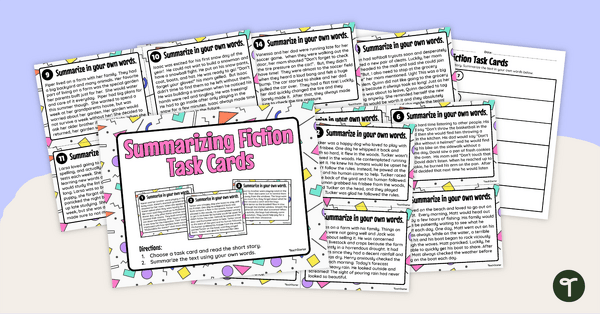
Summarizing Fiction Task Cards
Guide students along their summarizing journey with this set of Fiction texts on task cards for students to summarize.
- Plus Plan
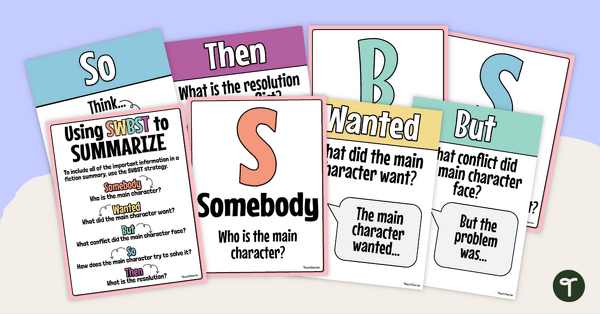
Summarizing Fiction Poster Set
Help students remember what to include in a summary of a fiction text with this easy to use SWBST acronym.
- Plus Plan
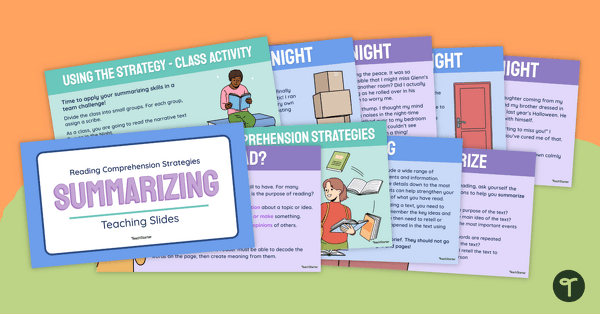
Summarizing Teaching Slides
Teach students all about summarizing with 15 teaching slides of summarizing goodness.
- Plus Plan
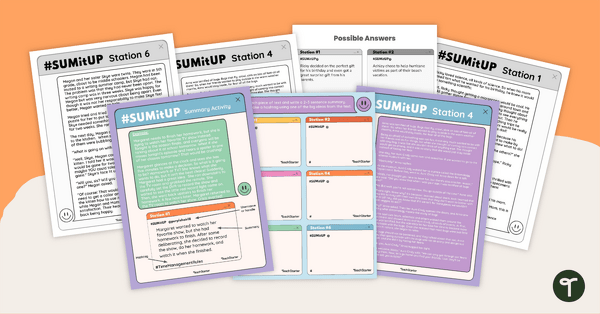
#SUMitUP Summarizing Activity
Summarize fictional text through this whole-class station activity.
- Plus Plan
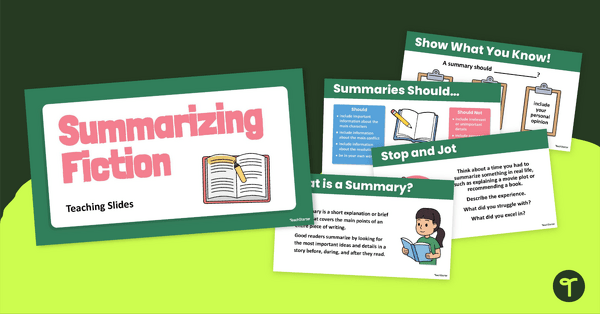
Summarizing Fiction Slide Deck
Build summarizing skills with fiction texts using these teaching slides.
- Plus Plan
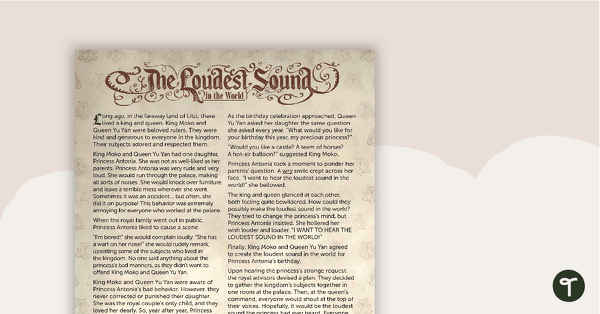
The Loudest Sound in the World – Comprehension Worksheet
A comprehension worksheet paired with a literary text about a princess who demands to hear the loudest sound in the world.
- Plus Plan
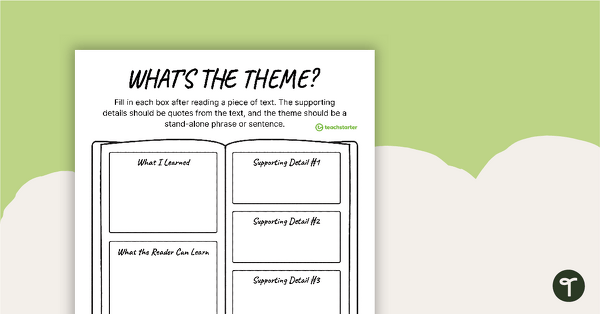
What's the Theme? - Graphic Organizer
Outline and determine the theme of a text with this 1-page graphic organizer worksheet.
- Plus Plan
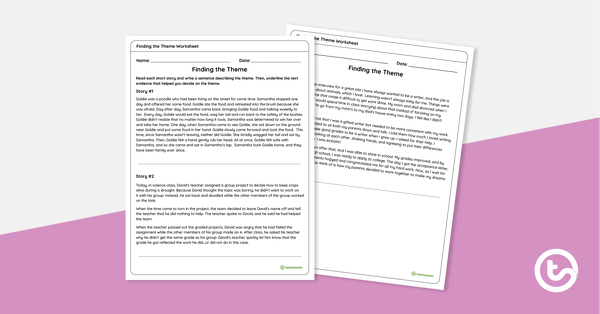
Finding the Theme Worksheet
Identify and explain the theme in 3 short story paragraphs provided in this worksheet.
- Plus Plan
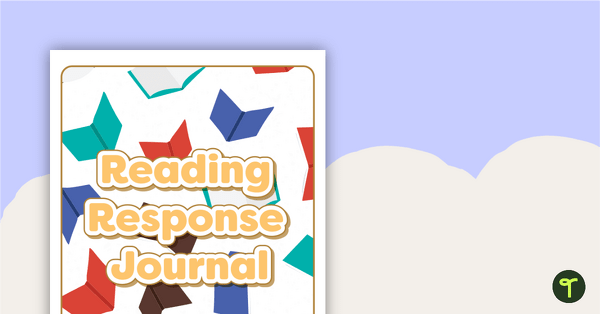
Reading Response Templates - Complete Journal
A reading response journal for students to use to engage with text in meaningful and purposeful ways.
- Plus Plan
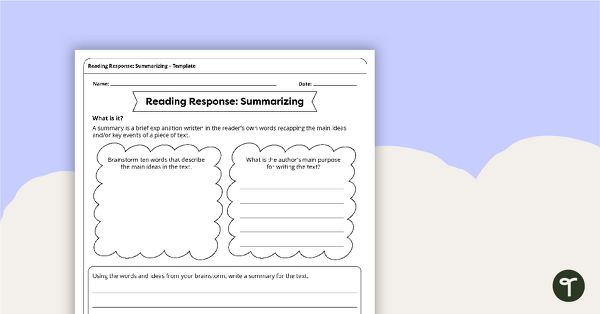
Reading Response Template – Summarizing
Practice summarizing a piece of text with this reading response template.
- Plus Plan
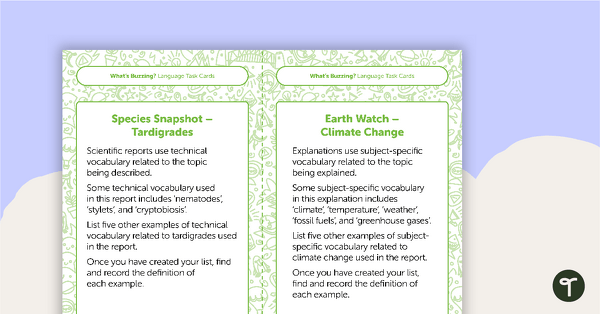
Grade 6 Magazine - "What's Buzzing?" (Issue 1) Task Cards
A set of five literacy rotation task cards to be used in conjunction with issue 1 of Teach Starter's Grade 6 magazine.
- Plus Plan
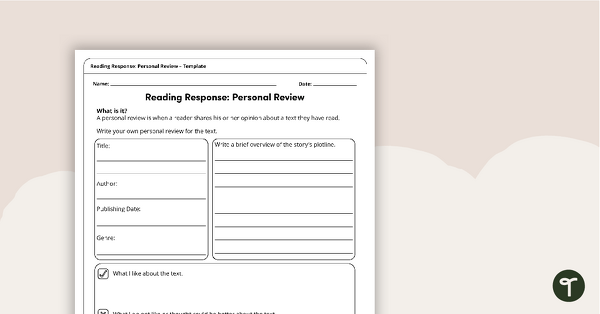
Reading Response Template - Personal Review
Write a personal review of a piece of text with this one-page template.
- Plus Plan
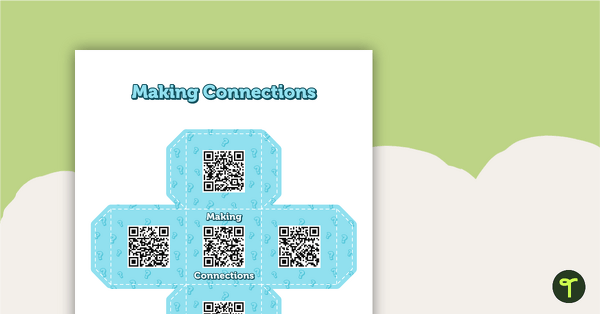
QR Code Reading Comprehension Strategy Question Cubes
A set of QR code question cubes to use when working with reading comprehension strategies.
- Plus Plan
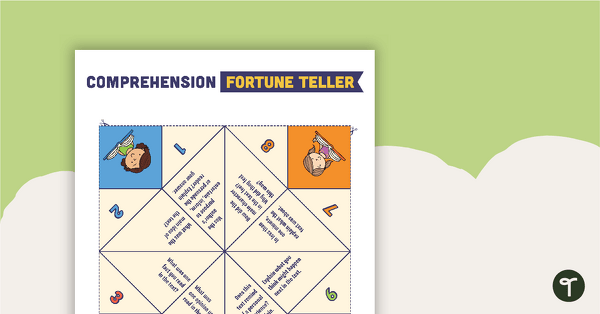
Comprehension Paper Fortune Teller
A fun reading comprehension strategy activity for students to use after reading a text.
- Plus Plan
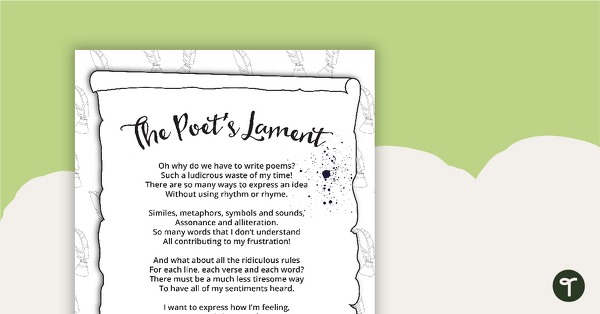
The Poet's Lament - Comprehension
A comprehension activity using a poem.
- Plus Plan
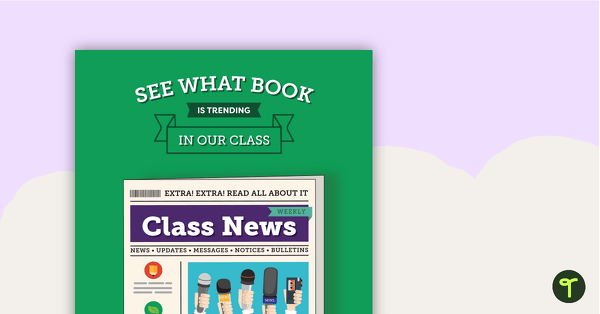
Newspaper Themed - Book Report Template and Poster
A fun newspaper themed poster with 3 book report templates to use when responding to literature.
- Plus Plan
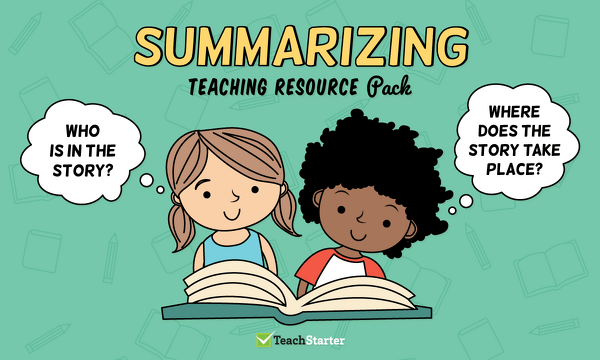
Comprehension Strategy Teaching Resource Pack - Summarizing
An extensive resource pack to help students understand the concept of summarizing.
- Plus Plan
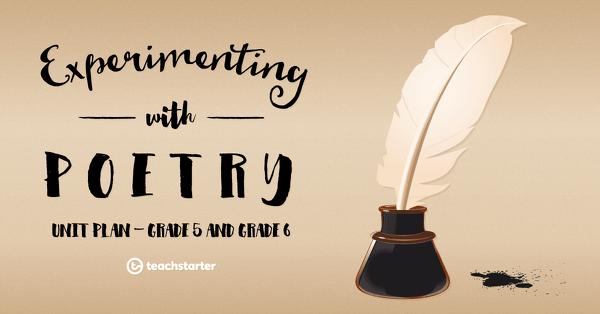
Experimenting with Poetry Unit Plan - Grade 5 and Grade 6
This English unit addresses the common elements of poetry and explores how these may be applied to shape poems, limericks, odes and simple ballads.
- Plus Plan
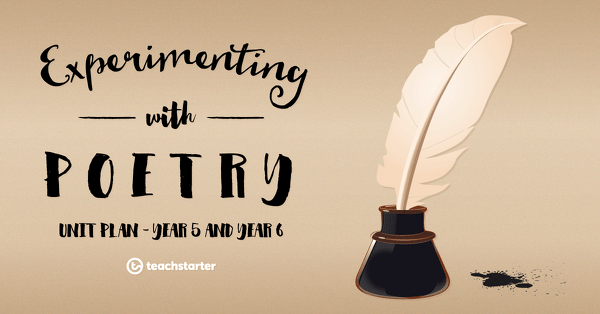
The Poet's Lament
A 60 minute lesson in which students will explore their preconceived ideas and attitudes towards poetry.